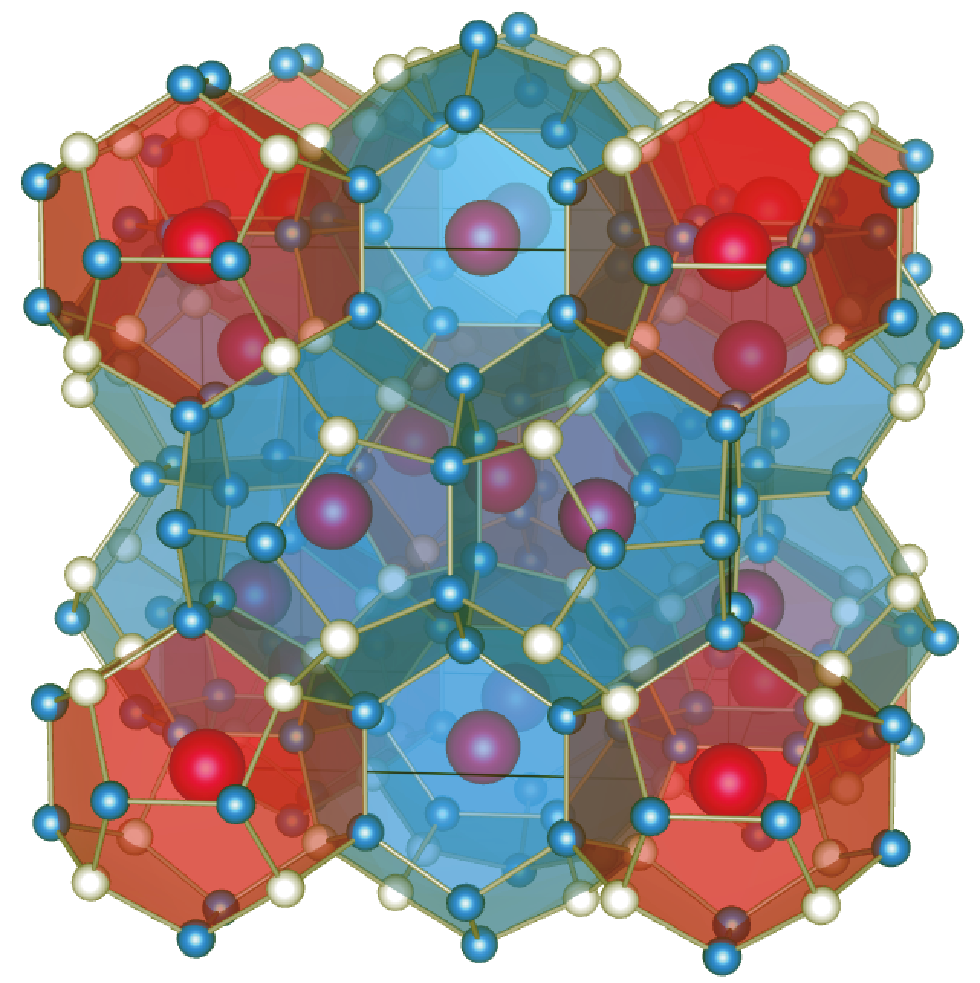 |
Japanese |
Tsuneyuki Research Group |
Research
"Thermal conductivity reduction by rattling vibrations"

Host-guest systems such as clathrates and filled skutterudites show unusually low thermal conductivities, and, therefore, have been the subject of intense studies for thermoelectric applications. The right figure shows the crystal structure of the type-I clathrate A8X16Y30 consisting of the host framework and the guest atoms enclosed inside the host cages. It has been considered that a large-amplitude atomic motion of the guest atom, the so-called rattling motion, is responsible for reducing the lattice thermal conductivity of host-guest systems. However, the microscopic mechanism of the reduction was not fully understood.
To unveil the effect of rattling guest atoms on the lattice thermal conductivity, we performed first-principles anharmonic lattice dynamics calculations of a type-I clathrate Ba8Ga16Ge30. By comparing phonon properties of Ba8Ga16Ge30 and a fictitious material Ga16Ge30, we showed that rattlers cause ten-fold reductions in the phonon lifetimes \(\tau\) in the low-frequency region through enhancement of anharmonic phonon-phonon interactions [1]. As a consequence of this significant reduction in \(\tau\), the lattice thermal conductivity is also reduced by a factor of \(\sim\)20.
[1] T. Tadano, Y. Gohda, and S. Tsuneyuki, Phys. Rev. Lett. 114, 095501 (2015).
